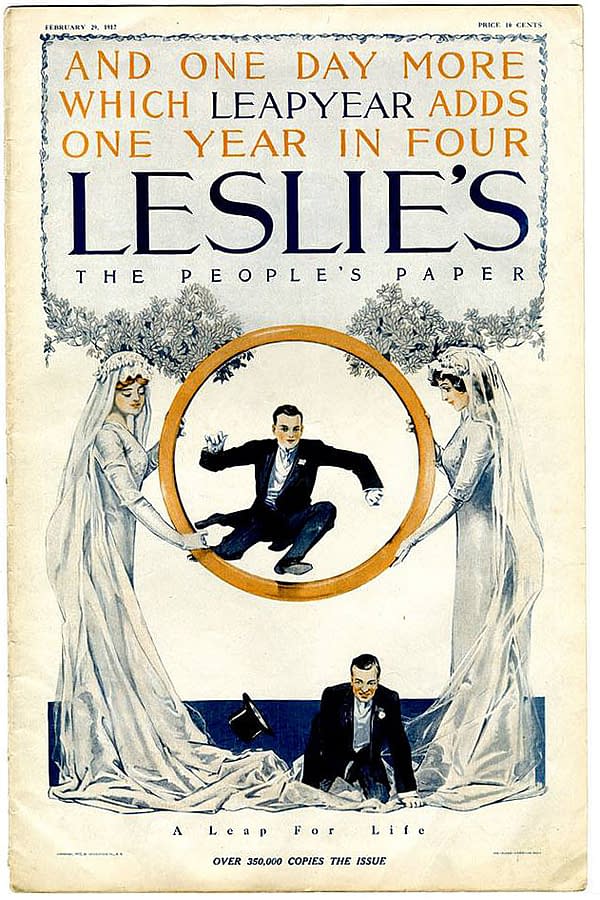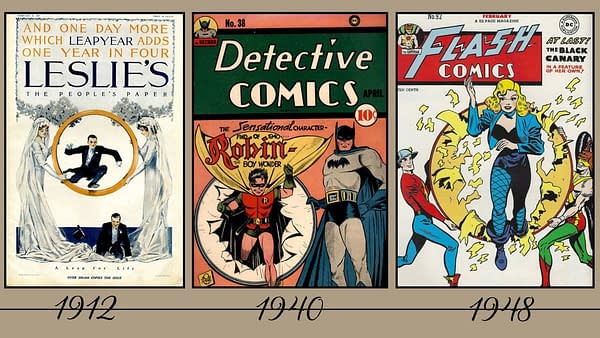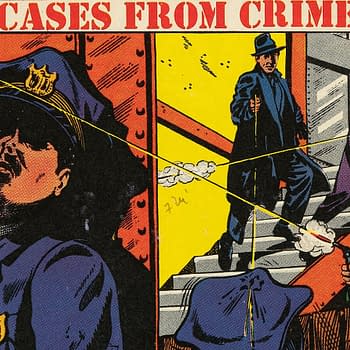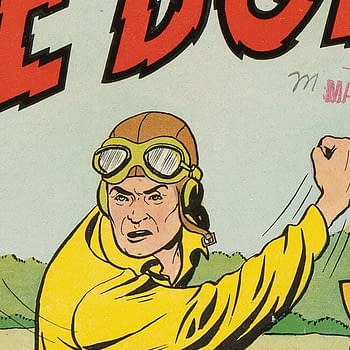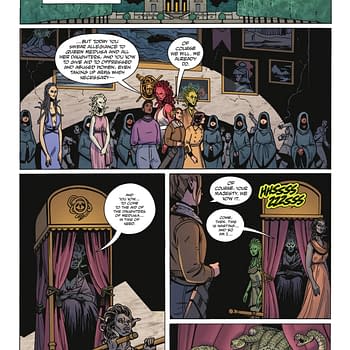Posted in: Comics, Vintage Paper | Tagged: black canary, detective comics, Flash Comics, frank leslie, robin, the issue
THE ISSUE: Robin and Black Canary Leaping Through Leap Day
Welcome to the once-every-four-years Leap Day edition of The Issue. At issue today is Leslie's Magazine, February 29, 1912 edition. One of the most important non-fiction titles in American history, the series got its start as Frank Leslie's Illustrated Newspaper in 1855. "Frank Leslie" was actually an English engraver named Henry Carter who had gotten his start at the Illustrated London News, and then moved to America to start his own publishing house. Through a few format and title tweaks, the series provides a spectacular look at an important stretch of American history from right before the Civil War to right after World War I. Painter and illustrator James Montgomery Flagg created a spectacular series of covers for Leslie's during WWI, including what is probably the most famous magazine cover in history — the "I Want You" Uncle Sam image, which was a Leslie's cover before it became a wartime poster and proceeded to take its place in history.
The Issue is a regular column about vintage comics and other vintage periodicals from throughout world history. The idea behind The Issue is simple: for each post, I'll choose something from my collection and talk about what's going on in it, and discuss the publishers and creators behind it. And essentially I'm just going to end up stepping through comics history one issue at a time. There is just one rule in The Issue: No recent stuff. Everything will be from before 1940, and most of it will be from before 1920.
I like the Leslie's run a lot for the reasons outlined at the top of this post. Browsing through a short stack of acquired copies some time ago, this February 29, 1912 issue of the series made me pause and look a little longer. Finally, I got the light-bulb moment: that leaping through a big ring cover device looked awfully familiar. But… Leap Year. Could it be?
The cover reminded me of two classic and iconic Golden Age comic book covers, and my hunch checked out. All three of these leaping-through-rings covers were published on or near Leap Day in a Leap Year.
In these examples, the Leap Years in question are 1912, 1940 and 1948. The issue of Leslie's (which was a weekly) is actually cover-dated on Leap Day, February 29. Detective Comics #38 has a copyright date of March 5, according to Library of Congress data. That means that it was almost certainly available in some areas on Leap Day, since in practice the street date of monthly periodicals would vary by several days from place to place around the country. Flash Comics #92 had a cover-date of February, which means that retailers were meant to pull that issue from the stands in that month. This too means that the issue was on the stands fairly close to Leap Day.
Is this all a coincidence…? I don't think so. As the Leslie's cover suggests, the ring is important to the symbolism because the original leap-year folklore is marriage-based. It's not an incredible leap (so to speak) to generalize that idea to partnership (in the case of Detective Comics #38's introduction of Robin) or attaining status as a character and team member (in the case of Black Canary having gotten a solo series soon after her debut in Flash Comics #86, and then joining the Justice Society of America in All Star Comics #38) .
Please note that I am not claiming that this is the basis for every comic cover ever created that features a character jumping through a hoop. Rather, I think that the Leslie's cover demonstrates the genesis of the symbolism as a cover device used for Leap Day, and this was carried forward for a little while by some cover illustrators. Solidifying this theory will require more research, which is ongoing. In the meantime, consider it a small leap of faith.


